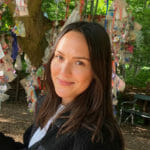
Lær at bruge Azure Cosmos DB
Lær med vores gratis quickstart-guides, vejledninger og eksempler.


Isabella Oliver
Social Lead
More than 800 participants signed up to the event that had both large corporations and small start-ups on stage to share insights and examples of innovation processes or products. The first person on stage, the host Charlotte, surprised the audience by saying: “I myself is part of innovation. I am not a human host but an avatar. Did I fool you?”
“We are not just looking into the crises of the pandemic. We are facing multiple crises. We have supply chain disruption, labor shortage and global warming. There is no company that is not affected by at least one of these types of crises”, Anne Marie Kindberg, the human host of the day and CMO & COO of Microsoft Denmark said and stressed that the crises will create urgencies.
“Therefore, we will see more inventions and more innovations than previously”, Anne Marie Kindberg predicted and underlined that there has never been a better time to focus on innovation than now because crises create the most optimal conditions for doing things differently. Simply because we need to. And the key to driving and accelerating innovation is technology. AI, IoT, low-code and data excellence is discussed at the absolute top level of organizations because the potential is so amazing.

Anne Marie Kindberg, CMO & COO at Microsoft Denmark
Kenneth Richard Geipel, Chief Executive Officer at Robotto was next on stage. The Danish company is working with AI and computer vision using drones to identify wildfires.
“In 2018, we saw a record-breaking number of fires in Sweden, we saw devastating wildfires running through Greece, and we saw another record-breaking mega-fire in California – a record that has been broken five times since. And we asked ourselves, how can we help with this pressing issue”, Kenneth Richard Geipel said.
Keeping track of all the fires requires an enormous amount of resources and reconnaissance. Using real-time data from drones allows firefighters to prioritize their resources and makes it easier to follow the movement of the fire and the development of the situation. Using technology also makes it possible to save up to 60-hectare land that otherwise would have burned because the firefighters get control of the fire much faster. This also means a massive reduction in CO2 emissions.
“This year, we are also introducing a search & rescue function to the drones”, Kenneth Richard Geipel explains, because when a fire occurs, people tend to flee and get lost. He and his colleagues at Robotto are driven by a true love for robots and a desire to help address one of the most devasting natural catastrophes, their motto being: Technology makes the impossible possible.

From left: Michèle Bellaiche & Kenneth Richard Geipel, Chief Executive Officer at Robotto
Even though the next speaker comes from a 60-year-old Danish shoe company, the VP and Global Creative Director of Ecco, Liam Maher, exemplifies a very modern approach to innovation.
Ecco experiments with a variety of different technologies to optimize the production making shoes that fit perfectly. For example, in some ECCO stores in Japan, it is possible to 3D-print soles while you wait. The sole is made to fit you perfectly and goes into any ECCO shoe. “Why 3D-print the whole shoe, when you can just print the sole” Liam Maher, asked rhetorically. Furthermore, ECCO is working with optimizing the process of leather tanning reducing both the usage of chemicals and water.

Liam Maher, VP Global Creative Director at Ecco
Although it has only been five years since Microsoft released Hololens1, there has been massive interest from both industry and customers. The increased focus on sustainability and Covid-19 has further demonstrated a need for collaboration with experts across locations. “HoloLens is deployed today across industries, and the potential is huge”, says Rune Jensen, General Manager HoloLens, Microsoft.
“To me, there is no doubt that HoloLens is the future computer”, he says and explains how mixed reality can be used for remote assistance, but longer-term, Rune Jensen believes HoloLens will replace the cellphone.
To find out whether innovation requires a fixed corporate framework or the possibility to play freely, Microsoft invited some of the most innovative start-ups and corporate companies to share their perspectives on creating the best environment for new ideas and new ways of working.
Participating in the panel were Line Kærsager, Director, Customer Engagement & Digital Commercial Foundation & Operations at Novozymes, Victor Riparbelli, CEO at Synthesia, Andreas Cleve, CEO at Corti, David James Thomas, Partner at Consensus and CMO and COO of Microsoft Denmark, Anne Marie Kindberg.
The panel agreed that innovation is a crucial element if a company is to succeed but creating the best circumstances for innovation to thrive depends on the company’s size. “In large companies, you have a lot of decision-makers, and you have lots of politics, no one’s job is really on the line the same way as in a start-up, where if you run out of money, you are dead,” says Victor Riparbelli.
Anne Marie Kindberg agrees that the innovation approach depends on the size of a company, but she also believes that it takes the same guts to innovate in large companies as in a small and that large corporations in many cases have created their own innovation hubs simulating a start-up environment.
At Novozymes so-called “Growth-hacking-teams” have been established. Line Kærsager said: “We have historically been very sales heavy driven, and we had to look into how to do things more digitally. But this is not done overnight. And in a large organization, there will always be someone saying, why are we changing this?” Therefore, Novozymes created smaller units of 3-4 people to constantly “open up the engine” and make sure the approach is right – just as a small company would do.

From left: Line Kærsager, Director, Customer Engagement & Digital Commercial Foundation & Operations at Novozymes, David James Thomas, Partner at Consensus, Anne Marie Kindberg, CMO & COO at Microsoft Denmark, Andreas Cleve, CEO at Corti & Victor Riparbelli, CEO at Synthesia.
David James Thomas from Consensus stressed the importance of larger organizations partnering with smaller businesses to develop and build new ideas. And when the panel discussed if Denmark was good enough at innovating, Andreas Cleve from Corti pointed out that we must move a lot faster. If not, we fall behind. “We need a new kind of language to move resources faster. We can’t keep talking about innovation processes. It is way too static and way too slow, and companies will be disrupted without even knowing it”.
After the main event, the participants got the opportunity to select one of four break-out sessions. The sessions included innovation and inspiration from Danish and international corporations within Retail, Financial services, Data-driven Public Sector and Software Innovation.